Related Research Articles
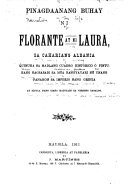
Florante at Laura is an 1838 awit written by Tagalog poet Francisco Balagtas. The story was dedicated to his former sweetheart María Asunción Rivera, whom he nicknamed "M.A.R." and Selya in Kay Selya.
Rene O. Villanueva was a Filipino playwright and author. He is famed for his deep involvement in theater and television and in children's literature, whether it be on television, in books or on stage.
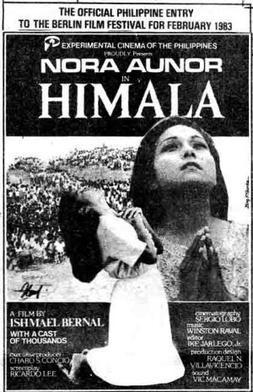
Himala ('Miracle') is a 1982 Filipino film directed by Ishmael Bernal and produced by the Experimental Cinema of the Philippines. It stars Nora Aunor as a young woman living in the province who claims to have seen a Marian apparition. The film story and script written by Ricky Lee was inspired by a series of alleged Marian apparitions appearing before schoolgirls, which took place from 1966 to 1972 on Cabra Island in Lubang, Occidental Mindoro.
Gaspar A. Vibal is the executive director of Vibal Foundation. As book collector, he pioneered the creation of Filipiniana.net and WikiPilipinas.org, two of the foundation's flagship projects. As a balikbayan from New York City, Gaspar is a scion of a family long-established in the Philippine book publishing and commercial printing industry. His parents are Hilarion Palomer Vibal (1908–1988) and Esther Asuncion (1923-2020). Hilarion was a writer, editor, and publisher. He is known as the co-founder of Vibal Publishing House, Inc., the Philippines' biggest publishing house. He was among the first generations of Filipino writers in English. On April 30, 1950, Hilarion met and married Esther at the time he was recruited by Ramon Roces's associate D.H. Soriano to become the business editor of Evening News. Gaspar's mother Esther, on the other hand, is a writer, publisher, businesswoman, socio-civic worker, lifetime member of the prestigious Girl Scouts of the Philippines and philanthropist. As incumbent president of Vibal Publishing House Inc. (VPHI), she is known internationally as the first Asian and Filipino world president (1983) of Inner Wheel Club, a socio-civic organization formed by wives of Rotary International. She was the founder of Philippine Women's Studies project and member of the board of trustees of UP Center for Women's Studies Foundation, Inc., a commissioner of the National Commission on the Role of Filipino Women, and was the president of the National Council of Women of the Philippines (1990).

Pepito Manaloto: Tuloy ang Kuwento formerly known as Pepito Manaloto, Pepito Manaloto: Ang Tunay na Kwento, Pepito Manoloto: Kuwento Kuwento and Pepito Manaloto: Ang Unang Kuwento, is a Philippine television sitcom series broadcast by GMA Network. Directed by Michael V., it stars Michael V. and Sef Cadayona both in the title role. It premiered on March 28, 2010, as Pepito Manaloto on the network's Sunday night line up.

The María Clara gown, historically known as the traje de mestiza during the Spanish colonial era, is a type of traditional dress worn by women in the Philippines. It is an aristocratic version of the baro't saya. It takes its name from María Clara, the mestiza protagonist of the novel Noli Me Tángere, penned in 1887 by Filipino nationalist José Rizal. It is traditionally made out of piña, the same material used for the barong tagalog.
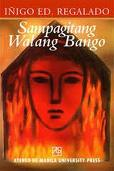
Sampagitang Walang Amoy, also rendered as Sampaguitang Walang Bango, was a 1921 Tagalog-language novel written by notable Filipino novelist Iñigo Ed. Regalado. The theme of the novel revolves around love, romance, treachery, and endurance. In the novel, Regalado depicted the City of Manila during the American occupation of the Philippines but before World War II. Sampagitang Walang Bango was one of the novels Regalado had written during the Golden Age of the Tagalog Novel (1905–1935).

Pinaglahuan is a Tagalog-language novel written by Filipino novelist Faustino S. Aguilar. Aguilar completed the manuscript on September 25, 1906. The novel was published by Manila Filateco in Manila, Philippines in 1907. The novel was written during the American period in Philippine history (1898-1946).
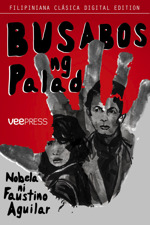
Busabos ng Palad is a Tagalog-language novel written by Filipino novelist Faustino Aguilar in 1909. Apart from tackling the "ills and injustices" in Philippine society, Busabos ng Palad revolves around love, romance, tragedy, and prostitution. The 157-page novel was published in Manila by Manila Filatelica.

Sa Ngalan ng Diyos is a Tagalog-language novel written in 1911 by Filipino author Faustino Aguilar. Controversially, it illustrated how greedy Jesuit priests schemed, manipulated, and took advantage of Carmen, a young, naive, pious, and affluent heiress. The 191-page book was published in Manila by the Limbagan at Aklatan Ni I.R. Morales during the American period in Philippine history (1898–1946).
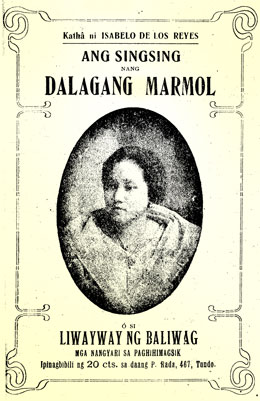
Ang Singsing nang Dalagang Marmol, contemporarily rendered as Ang Singsing ng Dalagang Marmol in the Tagalog language, is a historical novel written by Filipino novelist, scholar, and labor leader Isabelo Florentino de los Reyes before 1905. It is one of the first historical novels written in the Philippines during the first decade of the 20th century. It was also one of the first novels during the period that was written using the technique of blending fact and fiction. Through the novel, De los Reyes revealed his knowledge of the actual events during the Philippine–American War, making the subject as "integral elements" of the book. Based on the original 1912 bookcover for the novel, Ang Singsing ng Dalagang Marmol is alternatively titled Si Liwayway ng Baliwag.
Ang Anak ng Dumalaga is a Tagalog-language novel written by Filipino novelist Iñigo Ed. Regalado. It was published in 1933 in Manila, Philippines by the Limbagan Ilagan at Sanga during the American period in Philippine history (1898-1946). Ang Anak ng Dumalaga was one of the novels Regalado had written during the Golden Age of the Tagalog Novel.
Ang Huling Pagluha was the first novel of Filipino novelist Iñigo Ed. Regalado that appeared on the pages of the Tagalog-language magazine Liwayway. It began as a serial novel in Liwayway on 30 June 1926. The 283-page book version was published in 1933 in Manila, Philippines by the Bahay Aklatan "Ang Pagsilang" during the American era in Philippine history (1898-1946). Ang Huling Pagluha was one of the novels Regalado had written during the Golden Age of the Tagalog Novel (1905-1935).
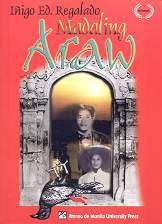
Madaling Araw ("Dawn") is a 1909 Tagalog-language novel written by Filipino novelist Iñigo Ed. Regalado. The 368-page novel was published in Manila, Philippines by the Aklatang J. Martinez during the American period in Philippine history (1899-1946). Madaling Araw won for Regalado a Panitikan Series Philippine National Book Award. The novel is both a romance novel and a political novel.

Luha ng Babae is a 1913 Tagalog-language novel written by Filipino novelist Mamerto A. Hilario. The 121-page book was published by the Limbagang Magiting Ni Honorio Lopez in Manila, Philippines during the American period in Philippine history. The 1913 edition of the book has a foreword written by Pascual de Leon.

Juan Masili: Ang Pinuno ng Tulisan is a 1906 Tagalog-language novel written by Filipino novelist Patricio Mariano. Based on Project Gutenberg, the original format of the title of the novel was rendered as Juan Masili o Ang Pinuno ng Tulisan meaning "Juan Masili or The Leader of Bandits", therefore the title could stand alone either as Juan Masili or as Ang Pinuno ng Tulisan. The 24-page short novel was published in Manila, Philippines by Libreria Luzonica during the American era in Philippine history.

Ang Tala sa Panghulo is a 1913 Tagalog-language romance novel written by Filipino novelist Patricio Mariano. The 207-page book was published in Manila by R. Martinez and was printed by the Imprenta at Litograpya Ni Juan Fajardo during the American era in Philippine history. The novel is alternatively known as Ang Tala sa Panghulo: Nobelang Taga-ilog, which can also mean Ang Tala sa Panghulo: Nobelang Tagalog, thus the alternative English translation is The Bright Star at Panghulo: A Tagalog Novel.
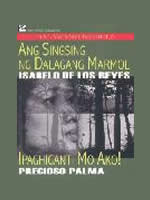
Ipaghiganti Mo Ako...! is a 1914 Tagalog-language novel written by Filipino novelist and dramatist Precioso Palma. The 207-page book was published in Manila by Limbagang Banahaw during the American era in Philippine history (1898-1946). The 1914 version of the novel has an afterword written by Julian C. Balmaceda.

Ang mga Anak Dalita is a 1911 Tagalog-language novel written by Filipino novelist Patricio Mariano. The 73-page novel was published in Manila by Limbagan at Aklatan Ni I.R. Morales during the American era in Philippine history (1898–1946). Ang mga Anak Dalita is a political novel that deals also with Filipino ideology, the socio-economic situation, the industrial upheaval, and the struggle of the oppressed Filipino working class in Manila during Mariano’s time.
Ang Lihim ng Isang Pulo: Nobelang Tagalog – "The Secret of an Island: A Tagalog Novel " – is a Tagalog-language novel written in 1926 by Filipino novelist Faustino S. Aguilar. The 353-page novel was first published by Sampaguita Press in the Philippines in 1927. It was republished in Manila by Benipayo Press in 1958.
References
- 1 2 "Ang Mestisa". Filipiniana.net. Archived from the original on 2 November 2010. Retrieved 12 June 2011.
- 1 2 "Ang Mestisa Ikalawang Bahagi". Filipiniana.net. Archived from the original on 11 March 2011. Retrieved 12 June 2011.